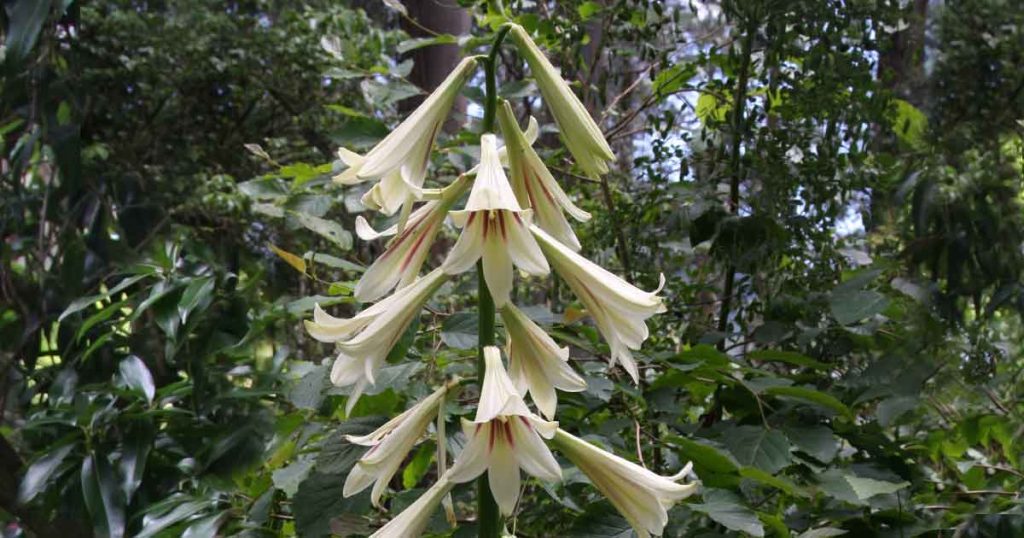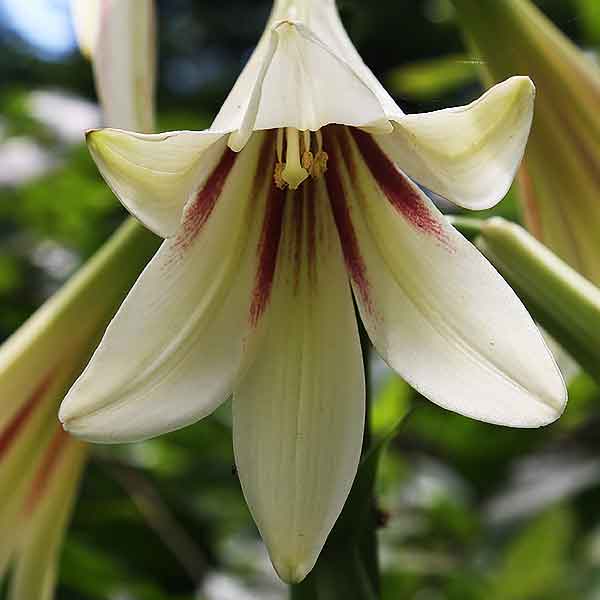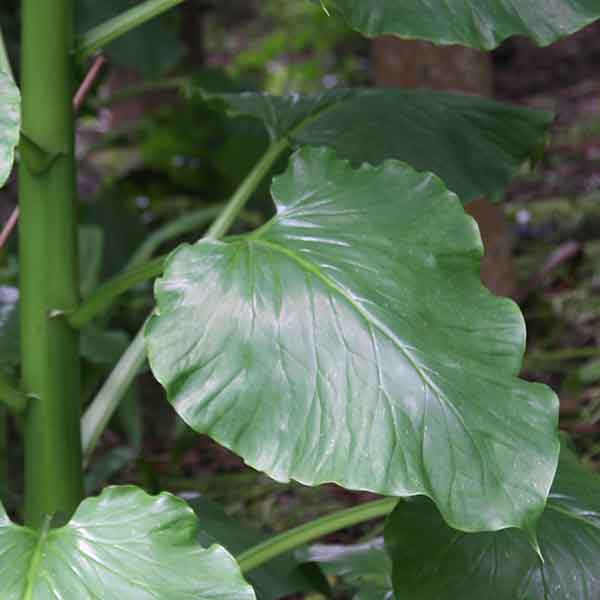
If you live in the right climate, and see Cardiocrinum giganteun for sale, then just buy it, you will be rewarded, eventually.
One of the truly magnificent plants, Cardiocrinum giganteum or ‘Giant Himalayan Lily’ is a fascinating plant that puts on a huge show of flowers in spring.

Growing to over 9ft with stunning large white lily like flowers this shade loving plant is a must for the cool climate garden.
We have seen this listed as an ‘easy to grow bulb’, we think that the writer may have never seen, or grown it. For a start it is not really easy to grow and flower. It requires well drained moist soil, dappled shade, but not deep shade and needs to be protected from deer and other animals.
Flowering in late spring to summer, this is a a monocarpic plant. It flowers once and then dies. However it will put out offsets, which in due course will reach flowering size.
Best grown in USDA zones 5 – 9, however any hot dry summers will be a problem.
How to grow Cardiocrinum giganteum
You do need to be in the right climate zone for this one, and it is fussy about position and soil. A position on a gentle slope is ideal.
- Choose a position with good light, however shaded from hot sun.
- Soil needs to well drained, humus rich and moist.
- Protect from hard frosts and freezes over winter by mulching.
- Plant in a permanent position, Himalayan Lilies resent being transplanted.
- Plant a group of 3 – 5 if possible, around 3ft (1m) apart for a great display.
- protect from slugs, snails and deer.
Planting.
If you have purchased a bulb, you will need to have prepared the soil well in advance. Dig in well rotted compost, some aged cow manure and make sure that drainage is good.
Plant with the tip of the bulb just above ground level. Water when needed with a liquid seaweed fertilizer.
Dividing Cardiocrinum giganteum
Wait until the plant has flowered before attempting to dig and divide. This can be done once the foliage dies right back.
Varieties
- Cardiocrinum cordatum – From Japan and smaller growing than C.giganteum
- Cardiocrinum cathayanum – From China
- Cardiocrinum giganteun var. yunnanense, foliage opens bronze and turns green as they mature.
Propagation
Propagation is from seed or by division of offsets.
By Division
This is a monocarpic plant, it grows flowers and then dies. In the meantime it makes offsets, and then when it flowers it also sets seed.
Tempting as it may be to speed up propagation by dividing C. giganteum before it flowers we do not recommend this. You may well end up losing the flower.
Wait until the plant has flowered and then died back. Then dig and divide the offsets, replanting immediately. We tend to place them in pots until they ‘get going’, after they are two years in the container, we put them in the garden.
From Seed
For those who are patient, you can propagate these wonderful plants from seed.
- A single seed capsule will produce 1000s of seeds. The seeds are winged, designed to spread by the wind.
- Fresh seed it essential for good germination rates.
- Grow then in a flat tray using a compost mix.
- Spread the seeds so they have space.
- Place a thin layer of grit over the seeds this ensures good air circulation and keeps the seeds from blowing away, stops birds from eating them and keeps them in good contact with the soil.
- Ideally you would leave them outside over a cold winter. They may take 2 years to germinate.
- Leave the seedlings in the tray for 2 – 3 years until they get to a good size before you divide them.
- You will need to provide moisture over summer.
- At this stage you can either plant them out or pot them up.
Summary Information

- Botanical Name – Cardiocrimum giganteum
- Common Name – Giant Himalayan Lily. Lilium giganteum
- Family – Liliacaea
- Natural Habitat – Himalayan foothills, Nepal to China and nearby areas in woodland clearings.
- USDA Zones – 6 – 9.
- Height – To around 6ft (2m)
- Spread – To a width of .5 m
- Growth Rate – Slow 5 – 7 years from seed to flower.
- Soil – Humus rich well drained.
- Position – Part shade to dappled shade. Protection from strong winds is essential.
- Flowering Time – Spring to summer
- Propagation – From Seed.
Where to buy
Not widely offered for sale, but try the following nurseries
ASIATICA
PO Box 270 Lewisberry PA 17339 No on- site sales
phone: 717 938-8677 fax: 717 938-0771

